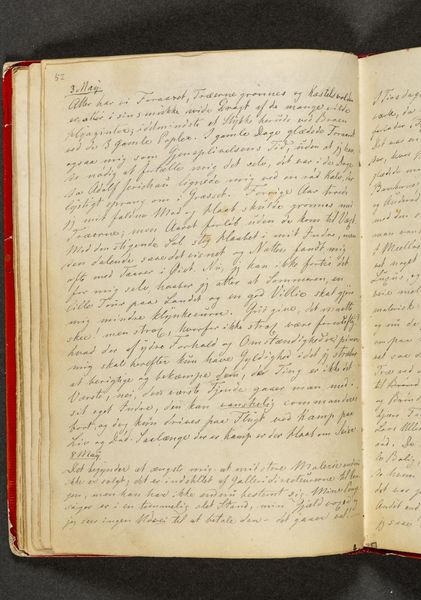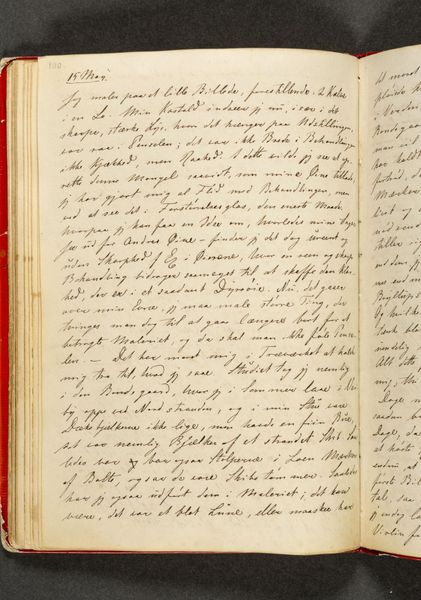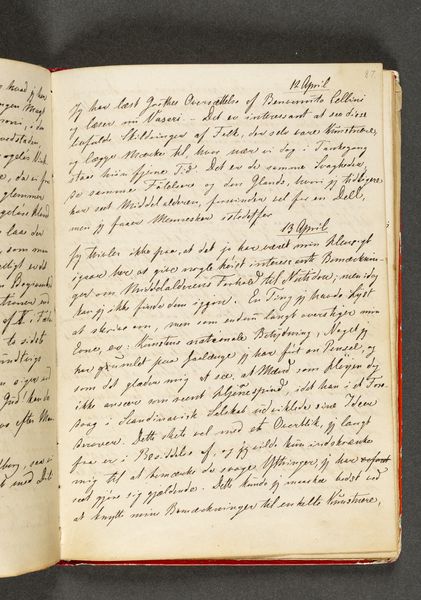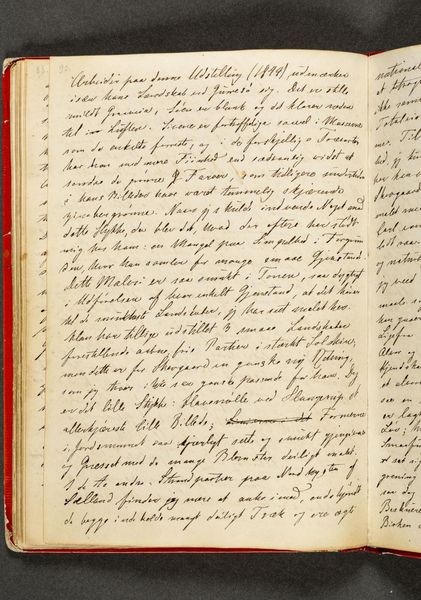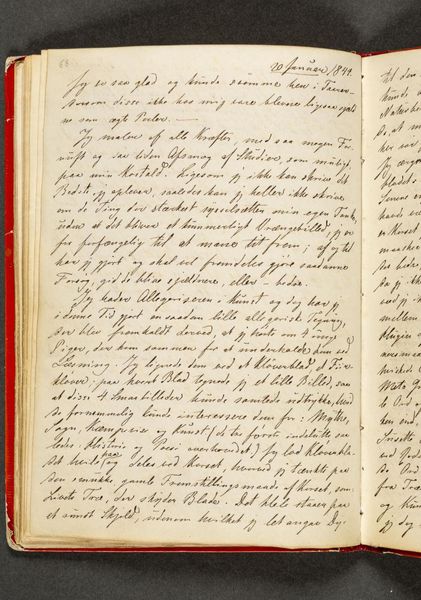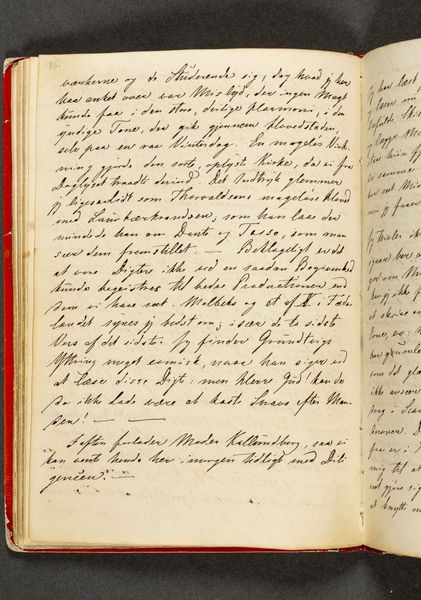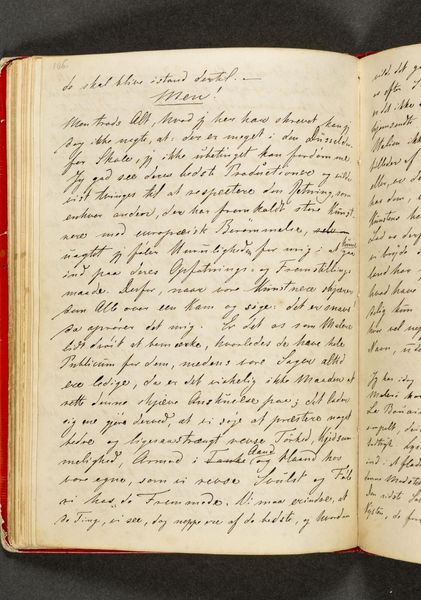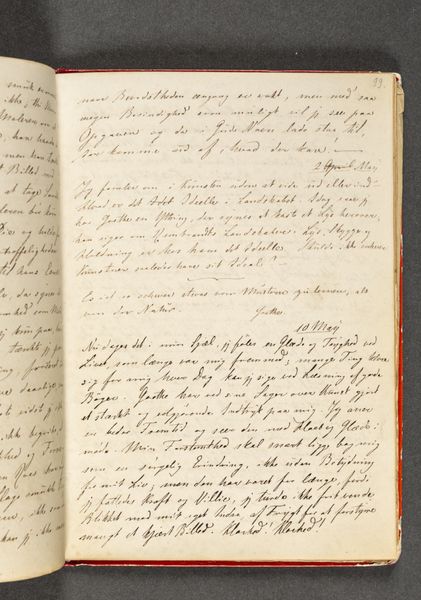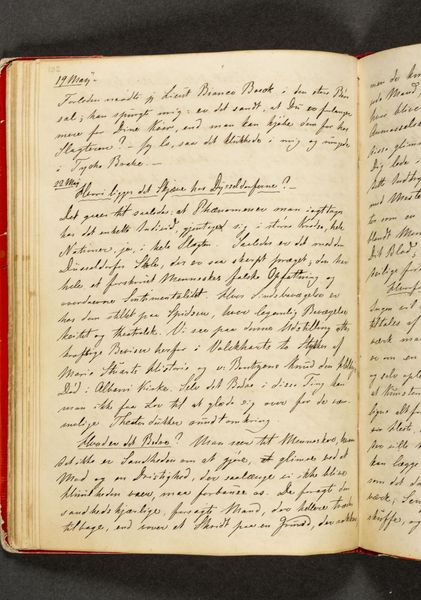
drawing, paper, ink
#
portrait
#
drawing
#
sketch book
#
paper
#
ink
#
journal
#
romanticism
Dimensions: 192 mm (height) x 133 mm (width) (bladmaal)
Curator: This is a fascinating piece by Johan Thomas Lundbye, entitled "Dagbog. Side 56", dating back to 1843. It’s currently held at the SMK, the Statens Museum for Kunst. Crafted with ink on paper, it gives us a glimpse into Lundbye's personal reflections. Editor: My immediate impression is one of intimacy, almost vulnerability. It's handwriting, so private and personal, filling every available space. There's a certain hurriedness to it, a feeling of thoughts spilling onto the page. Curator: Absolutely. What’s striking about this diary entry is its raw materiality. Look at the density of the ink, how it varies in darkness. Consider the paper itself – its texture, its aging. This isn't just about pretty words; it's about the physical act of writing, the labor and means by which thoughts were captured and consumed in the mid-19th century. This journal gives us great information about paper material in mid 19th century. Editor: I'm drawn to the symbolic nature of the diary itself. Throughout history, journals represent a space for self-discovery and confession. It's page 56, a single window into Lundbye's thoughts. The act of journaling suggests a need for introspection, a wrestling with inner feelings or experiences which will give way into symbols Curator: Precisely, but let's consider the broader social context. The proliferation of personal diaries in the 19th century reflects rising literacy rates among people and a burgeoning middle class with access to paper and ink. Journaling then was a method, like landscape painting or history painting, of middle class consumption. This diary is as much a commodity and statement about access as any high art canvas. Editor: Indeed, diaries and personal writings can hold particular symbols. Looking at how full these pages are makes me think he really took seriously the cultural expectations and the practice of recording events to try and derive patterns and to have historical continuity. I suspect too the style of his writing mirrors an ideal held then. Curator: Ultimately, seeing Lundbye's handwriting brings us closer to understanding art creation within these broader class dynamics. This everyday object tells a richer and interesting story. Editor: I find myself contemplating the timeless human impulse to record, to understand ourselves and the world through written words.
Comments
No comments
Be the first to comment and join the conversation on the ultimate creative platform.

